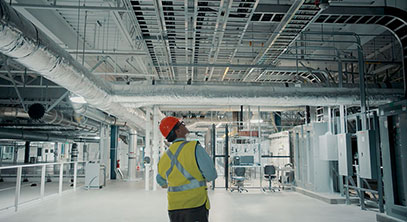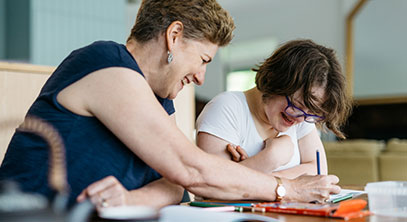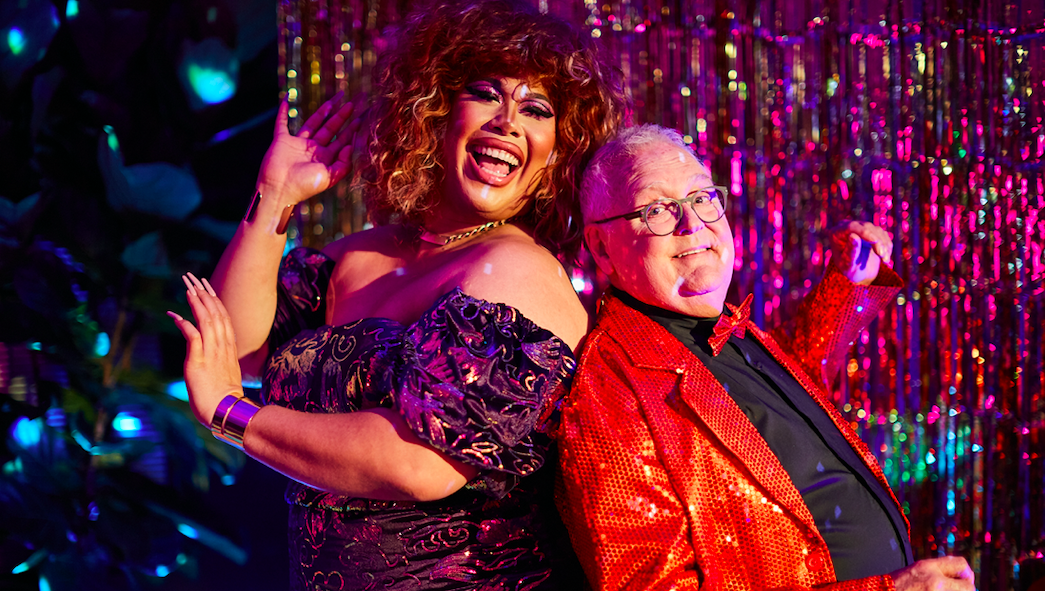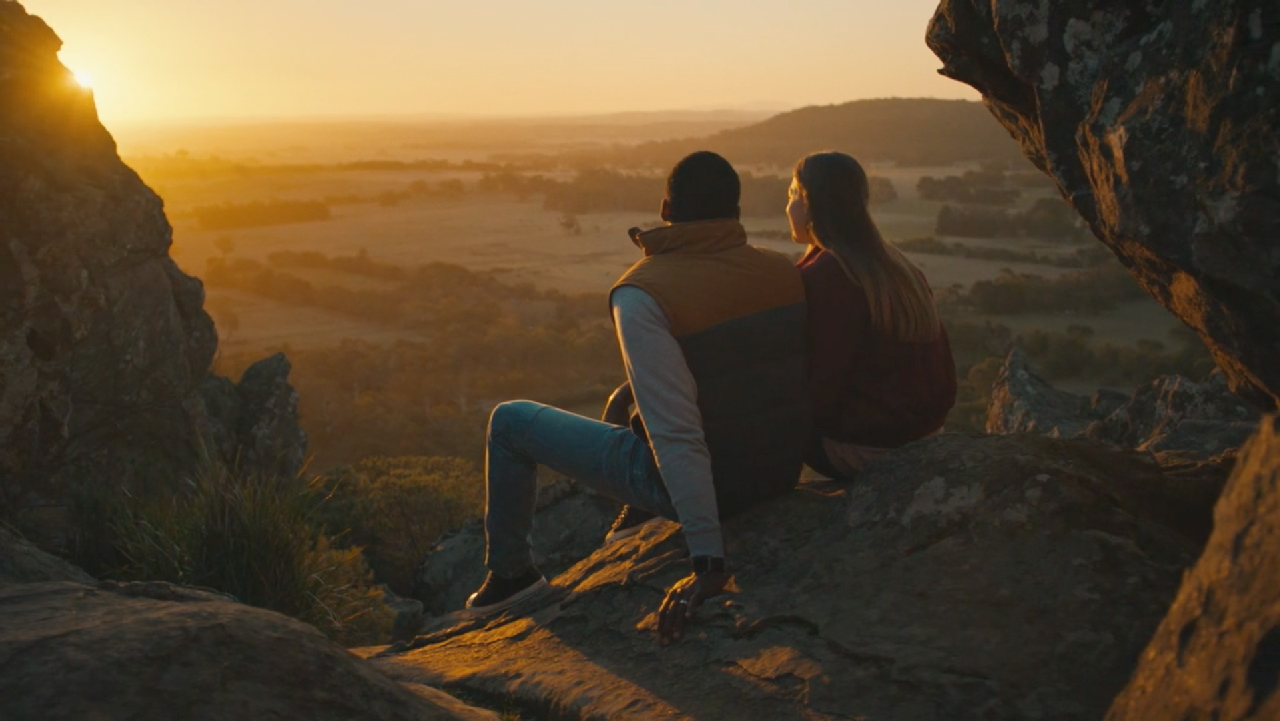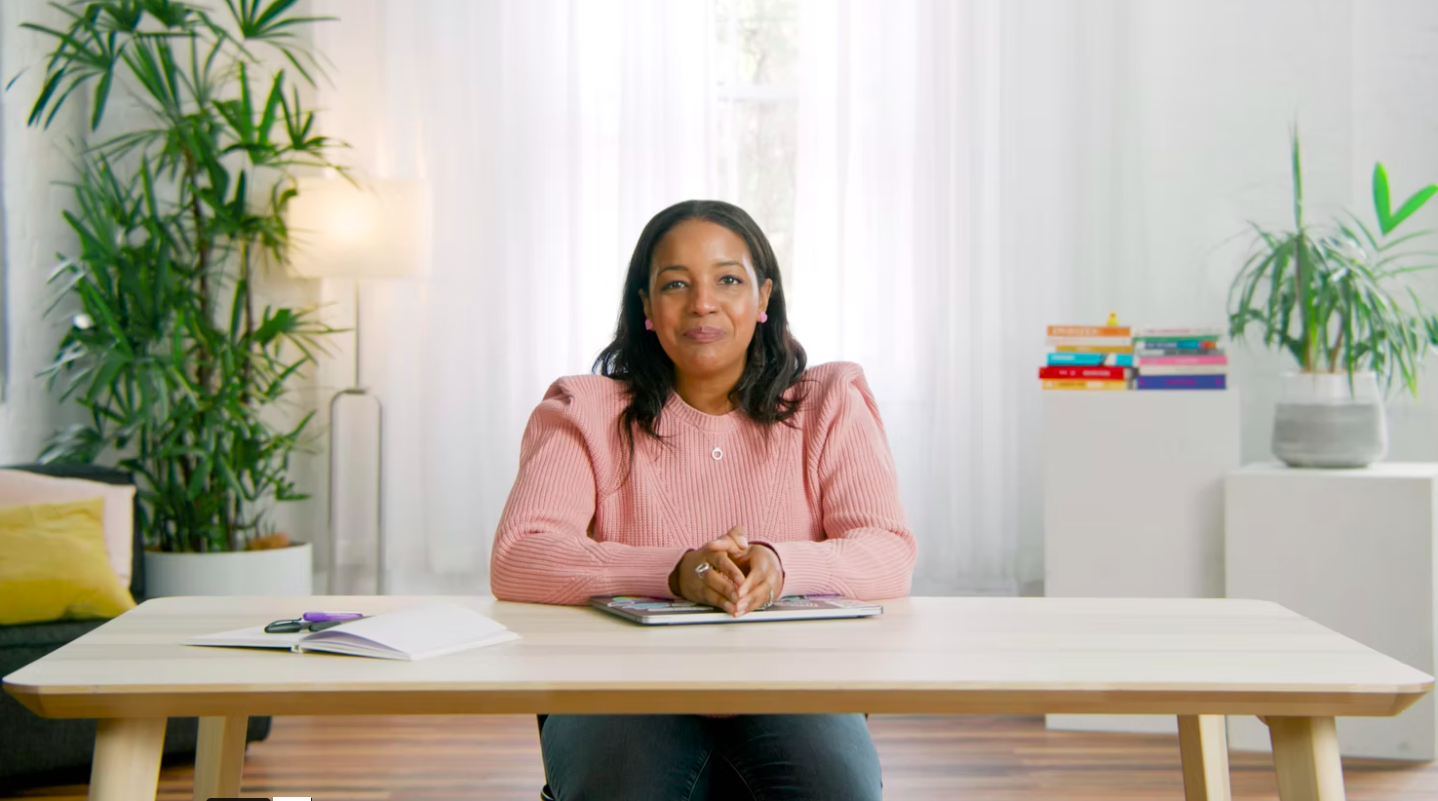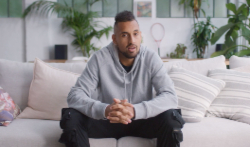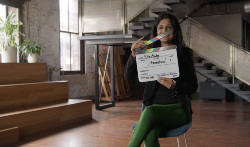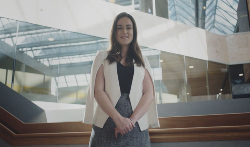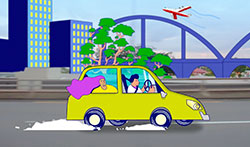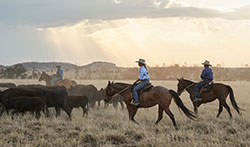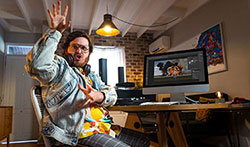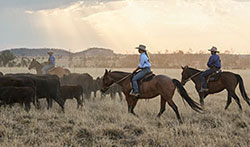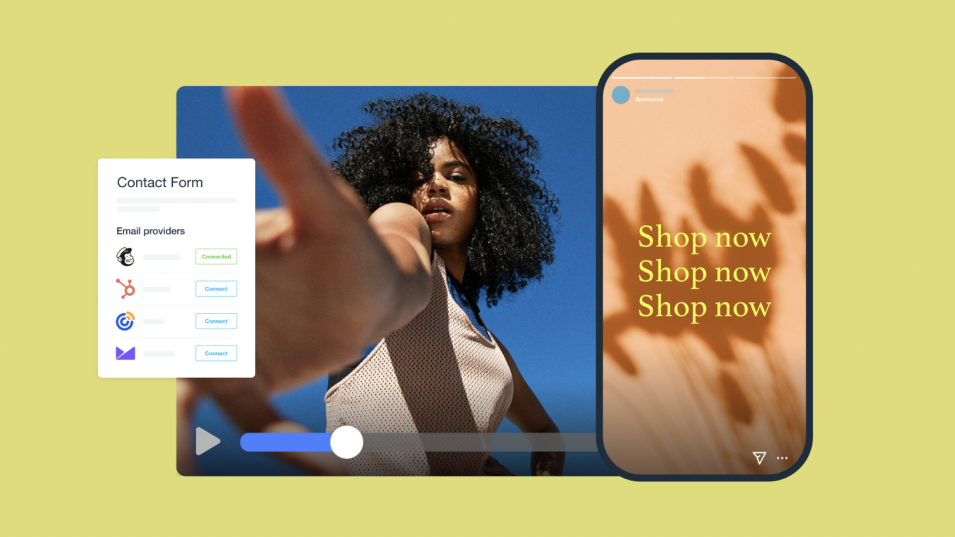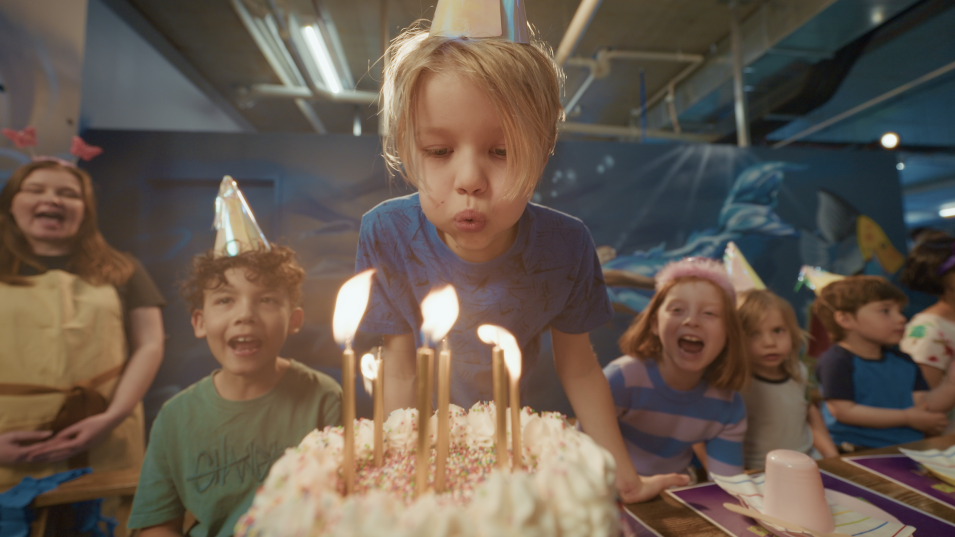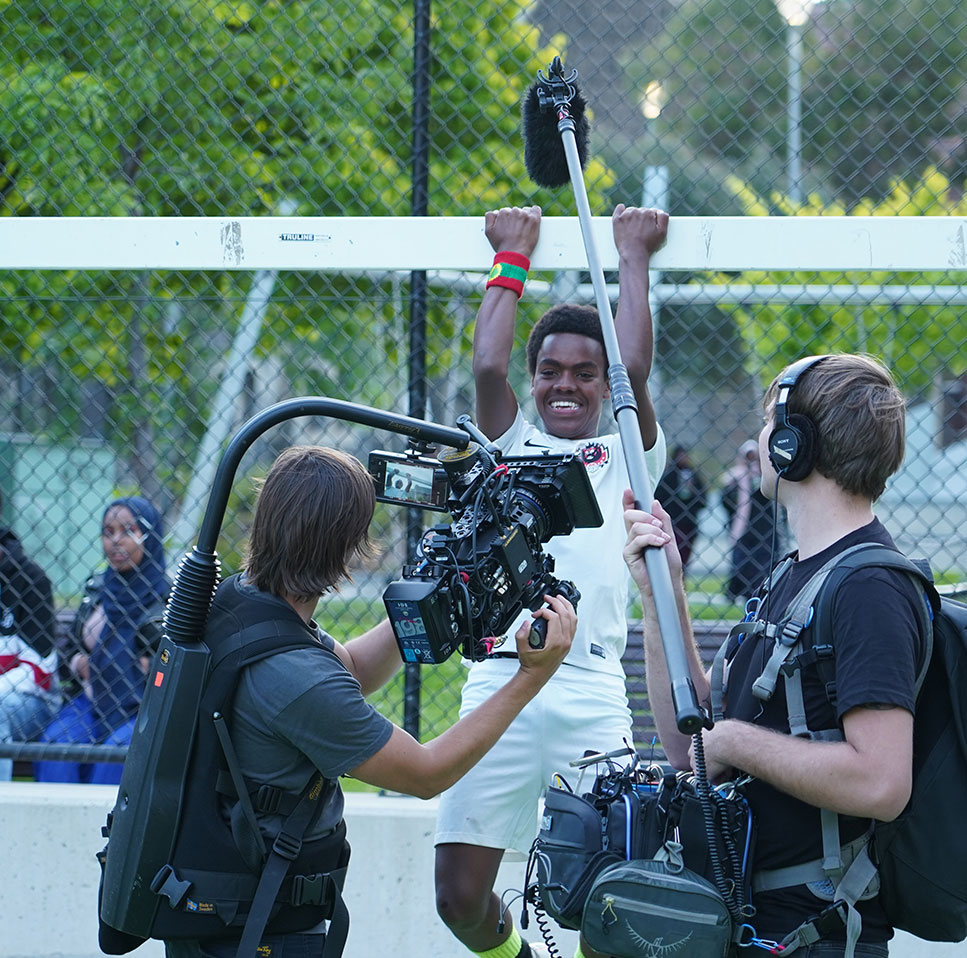Showcasing real-life examples of how your product or service has helped a customer overcome a challenge or achieve success through a video case study constitutes one of the most powerful ways to build trust and credibility with your potential customers.
With case study videos, businesses can:
- Demonstrate their product’s value with happy customers.
- Build credibility and win the trust of their audience in their video marketing strategy.
- Differentiate their brand or product from competing brands.
- Provide social proof with real customer success stories.
- Get more conversions, boosting sales in their marketing funnel.
- And more!
But creating a good case study video requires more than on-camera interviews with customer testimonials. We see many video marketing agencies and in-house video production teams approach case videos with many mistakes that bind them to failure.
At We Know Video, we’ve perfected a surefire process and strategy that helps us create some of the best case study videos out there (if we do say so ourselves).
In this post, we will cover the biggest mistakes we see and discuss our unique process at WKV to create successful case study videos.
Note: Want to work with an agency that has a fresh perspective on video? We Know Video has been producing creative videos for Canva, Adobe, Uber, and more for years and can do the same for you. Book a free consultation now.
Top 4 mistakes most production agencies or in-house production teams make when producing case study videos.
Here are the 4 most common video production mistakes and misconceptions we note and how they impact the final product you get.
Mistake #1: Not planning ahead with a recce or adequate imagery of spaces that will be shot in advance.
Most video producers miss out on the most important phase of the case study video production, the pre-production phase.
In general, video production is performed in three main stages: the pre-production, the production phase, and the post-production phase.
Pre-production is the planning phase. It’s where ideas are conceptualised, scripts are written, storyboards are created, locations are scouted, casting is done, and the budget is determined.
It lays the groundwork for the entire case study and ensures all necessary components are in place before filming begins.
And if it’s done well, you can eyeball any issues that may arise upfront — and quickly troubleshoot them before the filming begins, saving you time and money during the production and post-production stages.
But unfortunately, most video production agencies or in-house teams lack clear processes and workflows to ensure this phase is nailed to perfection.
Most of them work on a busy schedule. They’ve got deadlines to meet and clients breathing down their necks. So, it’s easy to put the daunting planning process on the back burner and figure it all out while filming.
But the main problem is for you, the client. Even though you may not be able to see it directly because you’re not a videographer, it results in subpar footage and wasted time during the shoot.
Also, you won’t have the shots you need to make your case study video engaging, emotive, or compelling. And it means that you’ll have to endure unnecessary back and forths and have to pay more for the creative to truly make it what you want.
Mistake #2: Not capturing enough B-roll.
Another issue we find with most case study videos is that they’re not engaging and visually interesting enough, so they’re unable to put their viewers in the customer’s shoes.
The real problem is that most of these videos or the professionals who produce them don’t capture enough B-roll or product shots to make the audience live the experience or visualise the product in advance.
These are crucial in a case study video to add visual interest and provide context to the story being told. Failing to capture enough B-roll footage or not planning how to best visualise a product-based case study will result in a dull, unengaging video for you, the client.
Mistake #3: Over-scripting. Providing interview subjects with too much dialogue
This mainly results in overly lengthy and unnatural case study videos. From the viewers’ perspective, it’ll make the featured customers or the story being told feel robotic or forced. And it means they’ll skip the video before it ends, and your churn rate will skyrocket.
The problem is that you and your video production team want your interview subjects to say exactly what you want them to say. So, you create a rigid script for every single word they should utter and miss the opportunity to let them speak their own experience from the heart in the video.
We understand having a script and plan for the video is important. But when it comes to case study videos, it’s all about creating relatable experiences; providing the customers with too much dialogue results in stilted, unnatural responses that will not resonate with viewers.
Mistake #4: Making it too much about the brand
This mistake primarily stems from ignoring the need of a person interested in a case study video and the primary purpose of the case study video itself.
A case study video is not an explainer video, nor is it a corporate video. Your audience wants to hear about your client’s successes, their wonderful experiences with your product, and how your product or service contributed to improving their lives, not how amazing you are (as hard as that is).
Making it all about you/your brand makes the video come across as a biased sales pitch. Also, focusing too much on your brand can result in a disinterested audience and a lack of engagement.
Note: Do you see that your current case study videos lack the ability to hook viewers or bring any substantial results? It’s probably one of the above issues hindering its performance. Book a free consultation now.
Our solutions at WKV to avoid these mistakes and produce stellar case study videos
At WKV, we understand the importance of creating compelling case study video that not only captures the attention of potential customers but also helps you convert them into actual leads.
If you are on the quest for a case study video, your biggest challenge is failing to convert leads, and case study videos can be an effective tool to get them over the line. Plus, there is a good chance that you’ll also need to:
- Provide your sales team with the tools to close deals more effectively.
- Re-engage existing leads and take advantage of cross-promotional opportunities by featuring impressive customers in our videos.
- Want to feature an impressive customer to take advantage of the cross-promotional opportunities/positive brand association.
So, our goal is to work with you to create a BOFU-content-like video that features a happy or satisfied customer’s experience, giving potential customers a better understanding of the benefits of your product or service.
We proceed by avoiding all those aforementioned reasons we see most case study videos fail. Our team focuses on creating unique case study videos that capture your audience.
We also recognise the importance of equipping your sales team with compelling sales materials like a quality case study video. So, we are committed to creating the best case study videos to help your business achieve its goals and drive success.
Here is how we do it at WKV and why our process and final product sets you up for success.
Solution #1: Nailing the why, your main goals, what you are trying to achieve, and how to convey it via the power of impactful storytelling.
We believe that producing the best case study videos starts with understanding the video’s main goals, what we’re trying to achieve, and how to convey this via the power of impactful storytelling.
For many customers, this is apparent, and the ultimate goal is to generate more business, leads, conversions, or customers, which is all good. However, it also has to do with the story’s context and the product or service being highlighted.
For example, suppose the video showcases a new software product. In that case, the goal may be to educate potential customers about the features and benefits of the product and demonstrate how it can solve their problems through the hero’s story.
Alternatively, if the video is focused on a service, the goal may be to highlight the service’s unique value proposition and how it can benefit your potential customers. So, we include you in the process. So, we will ask you a few questions:
- What problem is your product or service solving?
- How does it solve the problem?
- What are other products or services that solve the same problem?
- What’s unique about how your product or service solves the problem?
- What three emotions would you like your audience to feel after watching your video?
- What type of audience do you serve?
- Is your audience the half-empty glass type or the half-full glass type?
- What emotions do people feel when they fail to solve the pain points above?
- What could be the potential consequences of not solving the problems? How does that impact their lives?
Ultimately, these may not all go into the final product. However, they help inform everything from our narrative and interview questions right down to the b-roll we capture. It helps us to create a compelling narrative that resonates with the audience and effectively communicates the benefits of your product or service.
In other words, we leave nothing to chance. This deep understanding helps us to craft a compelling story that engages the viewer and brings the product or service to life.
For example, we can easily identify pain points your audience is experiencing and demonstrate how the product or service can solve these problems for them. We can also showcase real-life examples of how the product or service has benefited the hero, providing social proof and building trust.
Solution #2: Ensuring that the case study video is well-planned: We always plan everything, try to recce the space, interview the staff around the best locations, and more.
Of course, our second step in creating an exceptional case study video for you is ensuring we nail the planning phase.
Our team uses a unique workflow with several key activities (involving you) necessary for creating a successful video that effectively tells the story of a customer’s experience with your product or service. Think of it like the prediction phase.
We cover all the activities in the following table.
| Phases | Activities |
| Customer identification | Together with your team, we identify a compelling hero customer who has had a positive experience with your product or service and is willing to participate in the video. |
| Story development | Together with you and the hero customer, we will develop a story that showcases the customer’s experience with your product or service. We will highlight the benefits and outcomes they achieved. For example, we will include the customer’s pain point, how they came across your product, how they used it, how it impacted their business or lifestyle — their entire purchase journey. |
| Scriptwriting | Our internal team will develop a script scaffold that outlines the video’s narrative, including interview questions and themes you’d like covered off in the video. |
| Location scouting | Before the shoot, we recce the space to better understand the location and how to maximise it. We also look to find a space that fits in with the story’s needs and the budget. In cases where a physical visit is not feasible, we interview staff around the best locations to shoot and have them provide us with imagery. This approach ensures we have the best location to shoot the video and make the most out of the setting. |
| Equipment and crew | Based on the needs for the creative and concept we are shooting for, we will identify the necessary equipment and crew for filming, including cameras, lighting, sound equipment, a director, and more. |
| Interview preparation with the hero | Your hero customer probably isn’t accustomed to being in front of the camera. So, we include this step to prepare the customer for the interview process, including discussing key talking points and reviewing the script |
| Production schedule | After some talks among your hero customer, you, and our team, we will work to create a detailed schedule for filming, including dates, times, and locations for each shot. |
| Legal and permissions | This is not always the case, but your project might require it. It involves obtaining legal clearance or permission to film in certain locations or using certain materials. |
| Pre-visualization | Here, our team works on a rough cut or storyboard for the video for you to visualise how it will look and flow before filming begins. You will be able to see everything that will go inside the video, how the video will unfold, the different scenes and effects, and everything else. |
After this, it’s all about execution, and we ensure that the case study video meets the needs and expectations of the target audience.
Solution #3: Coming equipped with a detailed list of pre-approved B-rolls to capture and look for additional opportunities on the day.
We believe capturing the right visual elements is essential to making a great case study video. As mentioned, it’s the B-roll that makes your video dynamic and interesting.
One of the key aspects of our case study video production is capturing compelling B-roll footage that helps us tell the story and showcase the highlighted product or service.
To do this, we create a detailed list of B-roll footage to be captured, which must be approved by you, the client, in advance. Keep in mind that this list will be based on the first two sections above. Also, this is not a fixed list; we will adjust as opportunities arise.
Having someone on set who regularly uses the product or service promoted in the video can also be helpful. This person can provide valuable information and feedback on the shots, ensuring they accurately reflect the product or service.
This approach helps create more authentic and realistic images that resonate more strongly with the target audience.
However, in some cases, the client may want more control over how their product or service is portrayed in the video. In this case, we’ll film blank screens or placeholders, which can be replaced with animations or screen recordings during editing.
While this approach is more resource-heavy, it provides greater flexibility and control over the final product, allowing you to ensure that your product is presented in its best light.
Solution #4: Signing off on a list of questions in advance, along with some dialogue prompts to ensure we capture what we need on the day in a natural way.
Interviews allow us to gather the experiences and perspectives of the people involved in the story. To ensure that we capture the right information and convey it in a natural and authentic way, we agree on a list of questions with you beforehand.
We carefully craft this list of questions to get the most relevant and interesting information while ensuring the interview flows smoothly and naturally. The questions remain open-ended, and we let the hero express themselves as they wish.
Working on the interviews beforehand ensures we don’t miss any important information and avoid awkward pauses or missed opportunities during the interview shoot.
Along with the list of questions, we also provide dialogue prompts to help the hero feel comfortable and confident during the interview. This can include tips on answering questions, encouraging the hero to express themselves in their own words, reassurance, and support throughout the process.
This helps us create a loose and comfortable environment on set.
As a result, we can capture more natural and organic clips that resonate with the audience. Ultimately, the goal is to make the hero of the story look natural and authentic, which is essential to creating a compelling case study video.
Solution #5: Ensuring the story about the hero customer is compelling and relatable while eliminating all potential biases.
At the heart of any effective case study video is a compelling story about the hero customer and their experience with the customer’s product or service. Anything more about your company will be unnecessary and strike viewers as biased.
So to make the story as compelling and impactful as possible, we take care to eliminate any potential bias and focus the narrative on the hero’s success.
The key is to avoid focusing too much on the brand and concentrate on the tangible benefits the hero customer has gained from using the product.
We also ensure that the story is balanced and that the brand and customer successes are given the weight they deserve in the final story. This builds trust and credibility with the audience and makes the final product more relatable.
Here is an example of a compelling case study video we’ve produced for Canva.
Work with WKV to create your next case study video.
Producing a high-quality case study video requires careful planning, attention to detail, and telling a compelling story about the hero customer’s experience with the product or service.
We work closely with you to understand your video marketing goals and objectives, identify the key elements to make the story engaging and capture the right footage and interviews.
Whether it’s nailing the key message, capturing the right B-roll, asking the right questions, or ensuring the story is compelling and free from bias, we have you covered.
We take great care in planning and executing each step of the process to ensure that the final product sets you up for success. Talk to US.
Note: Do you want to improve the quality of your case study videos and get more conversions? We’ve done the same for top brands across several industries. Our team has the talent, expertise, and experience to understand your unique needs and help you conceptualise case study videos that’ll help you scale your business to the next level. Book a free consultation now.

